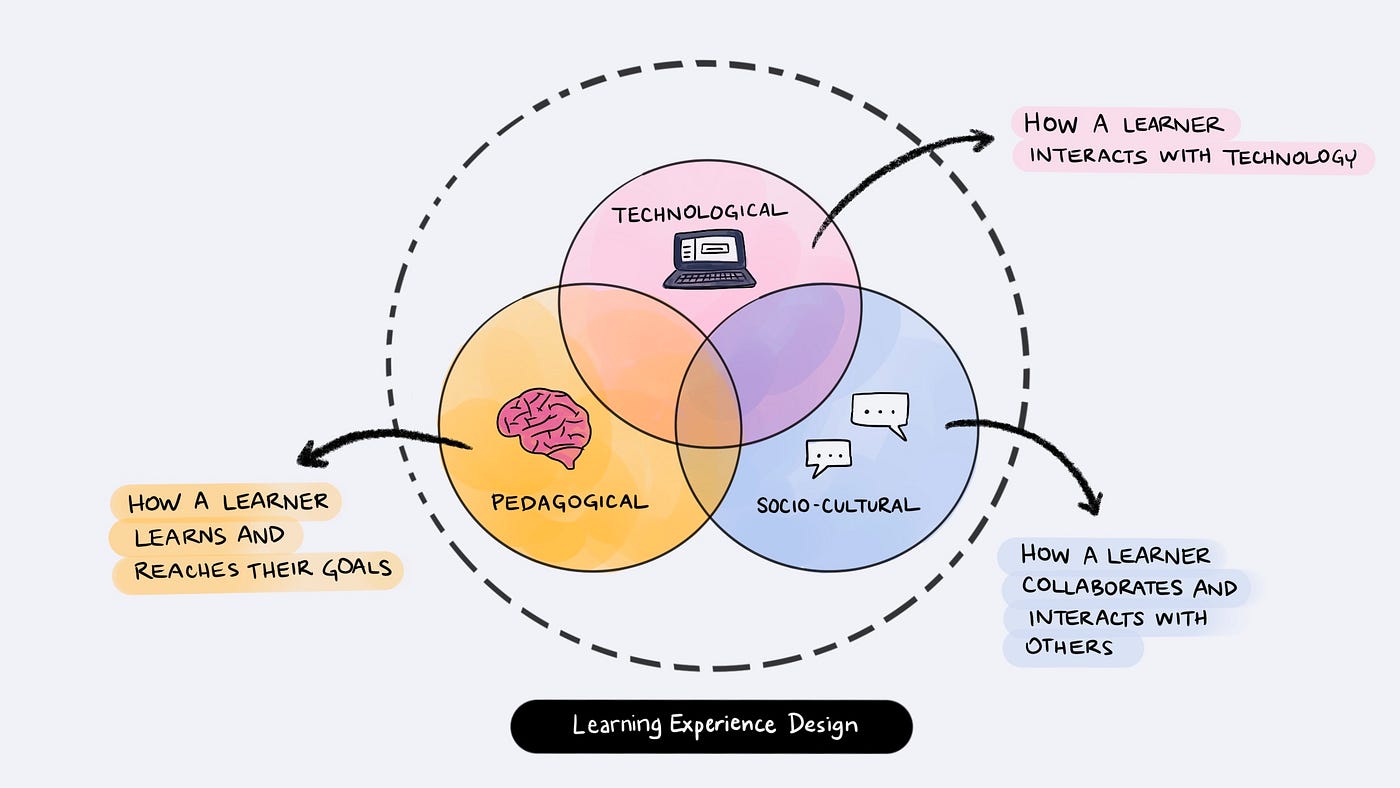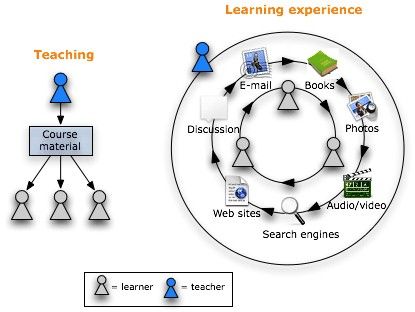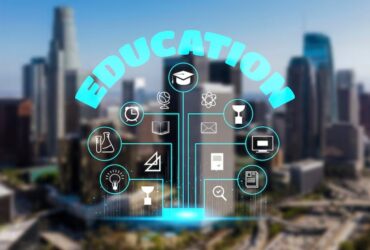A Learning Experience Designer creates engaging educational content using instructional design principles and technology. They design, develop, and implement learning experiences that enhance knowledge retention and engagement for learners.
This role involves collaborating with subject matter experts, identifying learning objectives, and utilizing various multimedia and interactive tools to create effective learning solutions. Learning Experience Designers play a crucial role in shaping modern education and training by applying their expertise in instructional design and technology.
They focus on creating interactive and engaging learning experiences that cater to diverse learning styles. By integrating multimedia and interactive elements, they aim to maximize knowledge retention and learner engagement. Through collaboration with subject matter experts and stakeholders, Learning Experience Designers ensure that learning objectives are met while leveraging innovative tools and technologies to create impactful educational content.

Credit: medium.com
The Role Of A Learning Experience Designer
A Learning Experience Designer (LXD) plays a crucial role in creating effective educational journeys and fostering innovative instructional methods. This role combines elements of instructional design, user experience design, and educational psychology to design engaging and impactful learning experiences. A Learning Experience Designer focuses on crafting educational journeys and innovating instructional methods to ensure learners have a meaningful and effective learning experience.
Crafting Educational Journeys
A Learning Experience Designer is responsible for crafting educational journeys that guide learners through a structured and engaging learning process. They carefully analyze the learning objectives and target audience to create a roadmap that aligns with the desired outcomes. By organizing content in a logical and progressive manner, they ensure that learners can easily grasp and retain the information presented.
Using a variety of instructional strategies, such as storytelling, gamification, and interactive activities, a Learning Experience Designer keeps learners actively engaged throughout the learning journey. They design assessments and feedback mechanisms to gauge learners’ progress and provide personalized guidance to enhance their understanding.
Innovating Instructional Methods
A Learning Experience Designer constantly seeks to innovate instructional methods to enhance the learning experience. They stay updated with the latest trends and technologies in education and leverage them to create dynamic and interactive learning experiences.
By incorporating multimedia elements such as videos, simulations, and virtual reality, a Learning Experience Designer brings the content to life, making it more engaging and memorable for learners. They also experiment with different instructional formats, such as microlearning modules or social learning platforms, to cater to diverse learning preferences and styles.
A Learning Experience Designer collaborates closely with subject matter experts, instructional designers, and technologists to ensure that the instructional methods align with the learning objectives and technological capabilities. They continuously evaluate the effectiveness of the instructional methods through data analysis and feedback, making iterative improvements to optimize the learning experience.
In conclusion, the role of a Learning Experience Designer is to craft educational journeys and innovate instructional methods to create impactful and engaging learning experiences. By combining instructional design principles with user experience design techniques, they enable learners to acquire knowledge and skills in a meaningful and enjoyable way.
Bridging Pedagogy And Design
A Learning Experience Designer bridges pedagogy and design to create engaging educational experiences. They blend instructional methods with innovative design principles to develop interactive and effective learning materials for diverse audiences. This role involves crafting dynamic content that enhances knowledge retention and fosters a stimulating learning environment.
Applying Learning Theories
Learning Experience Designers (LXDs) play a crucial role in bridging pedagogy and design, ensuring that the learning experiences they create are effective and engaging for learners. One of the key aspects of their work is applying learning theories to inform the design process. By understanding how people learn and the factors that influence learning, LXDs can create experiences that align with the principles of effective instruction.
Visual Design Principles
Visual design is an essential component of creating engaging learning experiences. LXDs use visual design principles to enhance the effectiveness of their designs. By incorporating elements such as color, typography, and layout, they can create visually appealing and intuitive interfaces that support learning. Moreover, they ensure that the visual design is consistent with the learning goals and objectives, reinforcing key concepts and making the content more memorable for learners.
Html Syntax For Headings:
Applying Learning Theories
Visual Design Principles
Tools And Technologies In Lx Design
Learning Experience Designers utilize a range of tools and technologies to create engaging and effective learning experiences. They craft interactive content, design user-friendly interfaces, and incorporate multimedia elements to enhance the learning process. Through their expertise, they transform learning materials into dynamic and impactful educational experiences.
As a learning experience designer, it is important to stay up-to-date with the latest tools and technologies in the field. Here are some key areas of focus:
Software Proficiency
Learning experience designers must be proficient in various software applications to create engaging and interactive learning experiences. Some of the most commonly used software includes:
- Adobe Creative Suite
- Articulate 360
- Camtasia
- Microsoft Office Suite
- Learning Management Systems (LMS)
Emerging Tech In Education
The field of education is constantly evolving, and new technologies are emerging all the time. As a learning experience designer, it is important to stay current with these emerging technologies. Here are some of the most promising technologies in education:
| Technology | Description |
|---|---|
| Virtual Reality (VR) | Immersive technology that creates a simulated environment |
| Augmented Reality (AR) | Technology that overlays digital content onto the real world |
| Artificial Intelligence (AI) | Simulated intelligence that can perform tasks that typically require human intelligence |
| Adaptive Learning | Software that adjusts the delivery of content based on the learner’s needs and abilities |
Incorporating these tools and technologies into learning experience design can greatly enhance the effectiveness and engagement of the learning experience. As a learning experience designer, it is important to stay curious and open to new possibilities for enhancing the learning experience.
Key Skills For Success
Interdisciplinary Collaboration
Learning Experience Designers must possess strong interdisciplinary collaboration skills to effectively work with subject matter experts, instructional designers, graphic designers, and technology specialists.
User-centric Mindset
A user-centric mindset is essential for Learning Experience Designers as they need to empathize with the learners and ensure that the learning experiences they create are intuitive, engaging, and aligned with the learners’ needs and preferences.
Challenges Faced By Lx Designers
Learning Experience Designers face challenges in creating engaging educational content, ensuring alignment with learning objectives, adapting to diverse learner needs, integrating technology effectively, and evaluating the impact of learning experiences. It requires a blend of instructional design skills, creativity, and a deep understanding of pedagogy to excel in this role.
Balancing Creativity And Constraints
Learning Experience Designers often face the challenge of balancing creativity with the constraints of technology, time, and resources. Creating innovative and engaging learning experiences requires out-of-the-box thinking, but it must also align with the organization’s goals and available tools. This delicate balance demands strategic planning and a deep understanding of the audience’s needs and preferences.
Staying Ahead Of Learning Trends
Another challenge for LX Designers is staying ahead of ever-evolving learning trends. Keeping pace with emerging technologies, pedagogical approaches, and design methodologies is crucial. LX Designers must continuously update their skills and knowledge to ensure that their designs remain relevant and effective in a rapidly changing educational landscape.
Impact On Modern Education
A Learning Experience Designer shapes modern education by creating engaging online courses and interactive learning materials. They blend instructional design with technology to enhance the overall learning journey for students. Through innovative strategies, they ensure that educational content is dynamic and effective in meeting learning objectives.
Impact on Modern Education
In today’s rapidly evolving world, the role of a Learning Experience Designer (LX Designer) has a profound impact on modern education. LX Designers play a crucial role in shaping the future of learning by creating engaging and effective learning experiences for students. Through their expertise in instructional design, technology integration, and user experience, LX Designers are able to create innovative and dynamic learning environments that cater to the needs and preferences of today’s learners.
H3: Shaping the Future of Learning
LX Designers are at the forefront of revolutionizing the way education is delivered. By leveraging technology and incorporating interactive elements, they create learning experiences that are not only informative but also engaging and immersive. These experiences go beyond the traditional classroom setting, allowing students to learn at their own pace and in their own preferred style. Whether it’s through gamification, virtual reality, or personalized learning paths, LX Designers are constantly exploring new ways to enhance the learning process and make it more enjoyable for students.
H3: Case Studies of Effective LX Design
Let’s take a look at some case studies that highlight the effectiveness of LX Design in modern education:
1. Case Study 1: Adaptive Learning Platform
A team of LX Designers developed an adaptive learning platform that uses artificial intelligence to personalize the learning experience for each student. By analyzing students’ strengths and weaknesses, the platform adjusts the content and pace of the lessons to meet their individual needs. This personalized approach resulted in improved student engagement and academic performance.
2. Case Study 2: Virtual Reality Simulations
LX Designers created virtual reality simulations to provide hands-on learning experiences in subjects like science and history. Students can explore historical landmarks or conduct experiments in a virtual lab, enhancing their understanding and retention of the subject matter. This immersive approach not only makes learning more exciting but also helps students develop critical thinking and problem-solving skills.
3. Case Study 3: Interactive Mobile Apps
An LX Designer team developed a series of interactive mobile apps for language learning. These apps incorporate gamification elements, such as quizzes, challenges, and rewards, to motivate students and make language learning fun. The apps also provide instant feedback and progress tracking, allowing students to monitor their improvement over time.
These case studies demonstrate the powerful impact of LX Design in improving student engagement, knowledge retention, and overall learning outcomes. By leveraging the principles of instructional design and incorporating innovative technologies, LX Designers are paving the way for a more effective and enjoyable learning experience in modern education.
In conclusion, the role of a Learning Experience Designer has a significant impact on modern education. Through their innovative approaches and expertise in instructional design and technology integration, LX Designers are shaping the future of learning. By creating engaging and personalized learning experiences, they are transforming education into a dynamic and interactive process that meets the needs of today’s learners. The case studies mentioned above highlight the effectiveness of LX Design in enhancing student engagement and improving learning outcomes. With LX Designers leading the way, education is becoming more engaging, immersive, and effective than ever before.

Credit: www.interaction-design.org
Frequently Asked Questions
What Is A Learning Experience Designer?
A learning experience designer creates educational materials to enhance learning and engagement.
What Skills Does A Learning Experience Designer Need?
A learning experience designer needs skills in instructional design, graphic design, and project management.
How Does A Learning Experience Designer Collaborate With Stakeholders?
A learning experience designer collaborates with stakeholders by conducting needs assessments and gathering feedback throughout the design process.
What Tools And Technologies Do Learning Experience Designers Use?
Learning experience designers use tools such as learning management systems, authoring software, and multimedia production tools.
What Is The Role Of A Learning Experience Designer In E-learning?
A learning experience designer plays a crucial role in e-learning by designing and developing effective and engaging online learning experiences for learners.
Conclusion
A Learning Experience Designer shapes engaging learning environments. They blend creativity with instructional design to enhance learning outcomes. By understanding user needs, they craft interactive and effective learning experiences. Their role is pivotal in modern education and corporate training settings.
Trust a Learning Experience Designer for impactful learning solutions.












































Leave a Reply